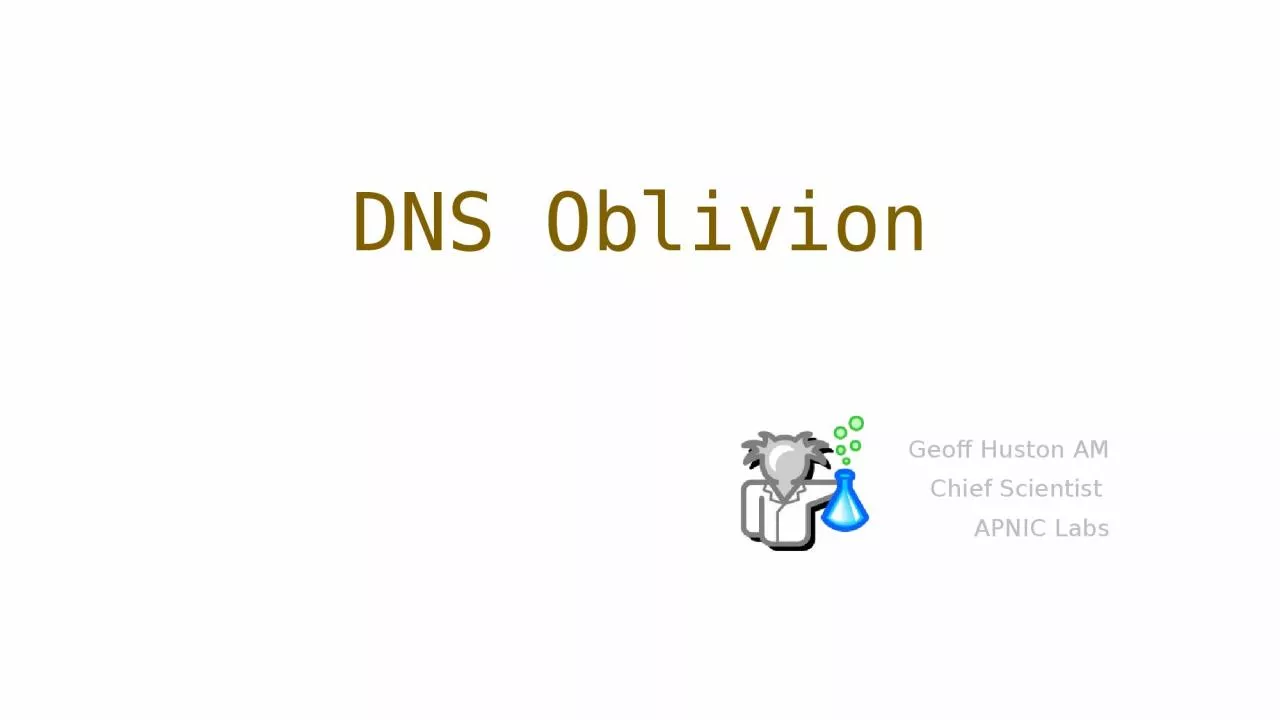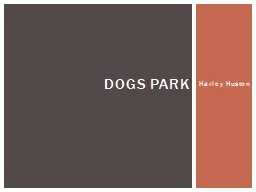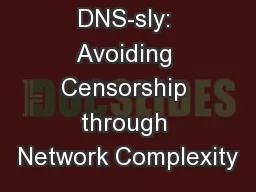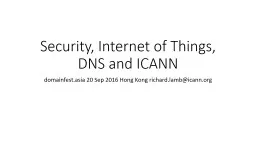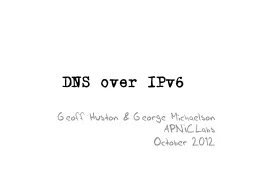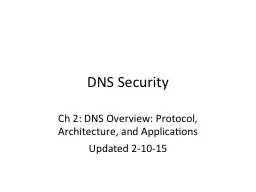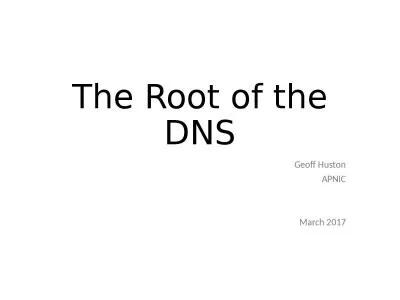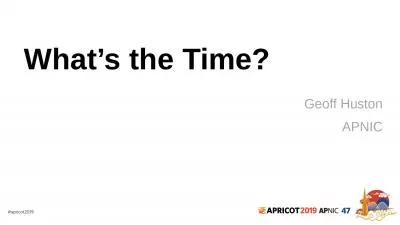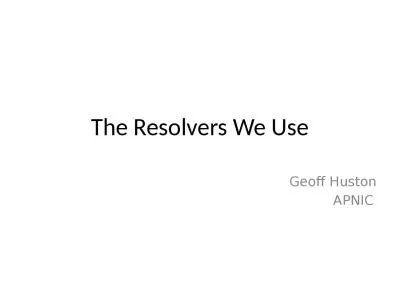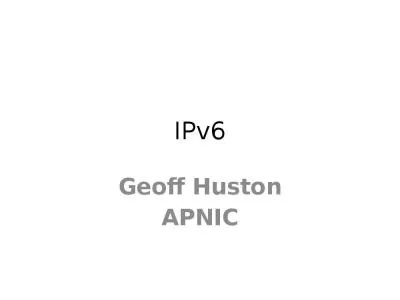PPT-DNS Oblivion Geoff Huston AM
Author : jocelyn | Published Date : 2023-10-04
Chief Scientist APNIC Labs Why pick on the DNS The DNS is very easy to tap and tamper DNS queries are open and unencrypted DNS payloads are not secured and tampering
Presentation Embed Code
Download Presentation
Download Presentation The PPT/PDF document "DNS Oblivion Geoff Huston AM" is the property of its rightful owner. Permission is granted to download and print the materials on this website for personal, non-commercial use only, and to display it on your personal computer provided you do not modify the materials and that you retain all copyright notices contained in the materials. By downloading content from our website, you accept the terms of this agreement.
DNS Oblivion Geoff Huston AM: Transcript
Download Rules Of Document
"DNS Oblivion Geoff Huston AM"The content belongs to its owner. You may download and print it for personal use, without modification, and keep all copyright notices. By downloading, you agree to these terms.
Related Documents

